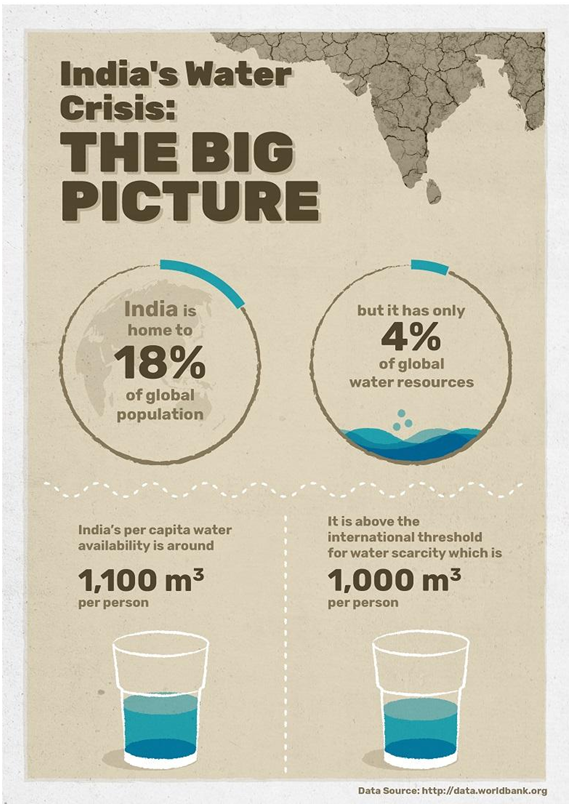How ‘vanishing’ rainfall is threatening economic stability
Context: Human activities – from destroying forests to burning gas, oil and coal for energy – are disrupting the rainfall the world depends on, fuelling huge economic, health and social stability threats. We’ve built our economies on the assumption we can rely on precipitation, But “what we’re finding is climate change and land use change is shifting that very significantly.
Why water is important
- New tools allow scientists to track and quantify flows of water vapour rising from rainforests like the Amazon and falling in distant places such as Argentina’s soybean and wheat fields, which are experiencing worsening drought as the Amazon shrinks.
- Vapour originating from the vast plains of Kazakhstan and other parts of Central Asia also provides about half of China’s water
- But as losses of forests and other nature disrupt those flows — and climate change brings more extreme and unpredictable rainfall on a hotter planet — water security is weakening in much of the world.
- That eroding water security poses a risk to everything from food supplies to hydropower production, a key source of low-carbon energy.
- Severe water scarcity – as seen today in the Horn of Africa after five failed rainy seasons – also has the potential to trigger political instability, conflict, displacement and migration, security analysts warn.
- The Global Commission report comes ahead of a key U.N. water conference next week – the first in five decades – aimed at charting a path to shore up declining global water security.
- Today about 3 billion people — almost one in three — live in water-stressed countries, a third of those facing critical pressures, according to 2021 data from UN-Water.
- Even more – 2 billion – live in agricultural areas facing high to very high water scarcity or shortages, the U.N. Food and Agriculture Organization said in a 2020 report.
- The World Economic Forum has said it hopes the U.N. summit can be a “Paris moment” for water, referring to the pioneering 2015 Paris Agreement on Climate Change.
- “Behind food production, behind energy, behind all the SDGs (Sustainable Development Goals), there is a volume of freshwater that powers the delivery of that service
Rethinking water
- Changing the trajectory toward growing water scarcity — with all the risks that brings — will require deeper understanding of how closely water supplies are linked to climate and nature protection, noted the report from the global commission.
- It will also require looking at freshwater as a global rather than just a local or regional issue, and strengthening how limited supplies are managed, shared and valued.
- “It’s not enough to store water and allocate water to different users. “Now we also need to secure the rainfall so it actually comes each year – so you have to manage your forest and ecosystems in a way that continues to generate water.”
- The choices around bolstering water security are not always easy. For instance, a desire to capture and store more water – to withstand longer droughts, manage extreme rainfall when it comes and generate clean hydropower – is leading to a surge in dam-building around the world.
- But constructing new dams often results in losses of forests, other nature and farmland. The land rights of local communities can also be threatened.
- In addition, increasing water storage in river dams can lead to growing tensions with neighbours downstream. The new Grand Ethiopian Renaissance Dam has prompted protests in Egypt, while India and Pakistan continue to argue over more dam-building.
- Only six of the world’s nearly 600 underground aquifers shared across international borders have a formal cooperative agreement covering their use, according to the Stockholm International Water Institute.
- But water is being shared across boundaries through more than rivers, aquifers and flows of vapour in the atmosphere. With agriculture responsible for more than 70% of global freshwater use each year, trade in food is also trade in water.
- Improving water security is likely to require shifts to more precise and sparing irrigation systems, crops that require less water, farming methods that stand up to drought and growing fewer thirsty crops in water-short places,
- In urban areas, meanwhile, changes such as boosting freshwater storage, recycling more wastewater and using less water in manufacturing will be key, the report noted.
‘Just’ water partnerships?
- But in many developing countries such reforms will require money debt-strapped nations don’t have – though some cash could be raised by phasing out nearly $700 billion a year in farming and water subsidies that encourage water waste.
- Just Water Partnerships, modelled on existing multi-billion-dollar Just Energy Transition Partnerships designed to speed a global transition to clean energy, should also be considered.
- Those deals, funded by richer donor nations, seek to help countries such as South Africa, Indonesia and Vietnam wean themselves off climate-wrecking coal, providing a global benefit as well as a local supply of sustainable energy.
| Practice Question
1. Today about 2.3 billion people — almost one in three — live in water-stressed countries, a third of those facing critical pressures. What can be done to solve the prevailing water crisis? |




